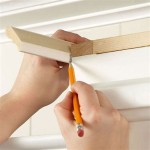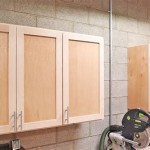Little Black Bugs in Kitchen Cabinets: Identification, Causes, and Solutions
The discovery of small black bugs scurrying around kitchen cabinets can be a distressing experience for homeowners. These minuscule invaders are not only unsightly but can also pose a threat to stored food items and, in some cases, even the structural integrity of the cabinets themselves. Identifying the specific type of bug is crucial for implementing effective control measures. This article will explore common types of small black bugs found in kitchen cabinets, their potential sources, and strategies for eliminating them.
Identifying Common Culprits: Species and Characteristics
Several different species of small black bugs may infest kitchen cabinets. Accurate identification is paramount for selecting the appropriate treatment method. Often, homeowners mistake crumbs and dust for insects or falsely identify the type of insect present.
Flour Beetles: Flour beetles are a frequent offender in kitchen pantries and cabinets. These tiny, reddish-brown to black beetles are often found in stored grain products like flour, cereal, pasta, and dried beans. They range from 1/8 to 3/16 inches in length and are attracted to the fine dust and debris that accumulates in these food items. There are several types of flour beetles including the confused flour beetle and the red flour beetle, named for the slight color difference. These pests can breed rapidly in infested food, contaminating entire containers and spreading to other food sources within the cabinet. Adult flour beetles are highly mobile and capable of flying, allowing them to easily move between cabinets and even to other areas of the kitchen.
Grain Beetles: Similar to flour beetles, grain beetles infest stored grains and cereals. These beetles, such as the sawtoothed grain beetle and the merchant grain beetle, are typically dark brown to black and approximately 1/10 to 1/8 inches long. They are easily recognized by the sawtooth-like projections along the sides of their bodies. Grain beetles are commonly found in whole grains, rice, nuts, dried fruits, and even spices. They are adept at squeezing into cracks and crevices in packaging, enabling them to infest sealed containers. Like flour beetles, grain beetles can reproduce quickly in infested food, leading to a rapid population increase.
Drugstore Beetles: Drugstore beetles are small, cylindrical beetles that are about 1/10 to 1/7 inches long. They have a reddish-brown to dark brown color and a humped appearance. These beetles are notorious for their ability to feed on a wide variety of dried plant and animal products, including spices, pet food, books, and even prescription drugs (hence the name). In kitchen cabinets, they may be found in spices, dried herbs, and even decorations made of natural materials. Drugstore beetles are capable of boring through packaging, making it difficult to prevent infestations in susceptible items.
Cabinet Beetles (Dermestid Beetles): Cabinet beetles, also known as dermestid beetles, are a group of beetles that feed on dried animal products and plant materials. Common species include the larder beetle and the carpet beetle. They are typically brown or black and range in size from 1/8 to 1/4 inches. While they are more commonly associated with fabric and carpets, cabinet beetles can also infest kitchen cabinets, particularly if there are spilled food particles, pet food, or even dried insects present. Larvae of cabinet beetles are often hairy and can cause damage to stored items by feeding on them. Dermestids are very common in homes, and controlling them involves thorough and regular cleaning.
Ants: While not always considered "small black bugs" in the same context as beetles, certain ant species, like pavement ants or odorous house ants, are common invaders of kitchen cabinets. These ants are typically black or dark brown and range in size from 1/16 to 1/8 inches. They enter homes in search of food and water, and kitchen cabinets provide a readily accessible source of both. Ants often leave pheromone trails to guide other ants to the food source, leading to large numbers of ants congregating in the cabinets. If crushed, odorous house ants emit a distinct, unpleasant odor, which is a key identification feature. Their presence indicates a need to find and eliminate the colony, often located outside of the kitchen itself.
Sources and Contributing Factors to Infestations
Understanding how these pests enter and thrive in kitchen cabinets is crucial for preventing future infestations. Several factors contribute to their presence and proliferation.
Improper Food Storage: Food items stored in flimsy packaging or open containers are highly susceptible to infestation. Beetles can easily penetrate thin plastic bags, cardboard boxes, and poorly sealed containers. Once inside, they can feed, breed, and contaminate the food. Spilled food particles and crumbs that accumulate on shelves and in cabinet corners provide a continuous food source for these pests.
Contaminated Food Purchases: Insects can be introduced into the home through already-infested food products purchased from the store. Eggs or larvae may be present in seemingly intact packages. Once the product is brought home and stored in the cabinet, the insects can hatch and begin to multiply. Careful inspection of food items before purchase is essential to avoid introducing pests into the home.
Cracks and Crevices: Small cracks and crevices in cabinets, walls, and floors provide entry points for insects. Beetles can squeeze through these openings and access food sources within the cabinets. Unsealed gaps around pipes and wiring also serve as potential entry points.
Moisture: Excess moisture in kitchen cabinets can create an ideal environment for certain pests, particularly ants. Leaky pipes, condensation, and poor ventilation can contribute to moisture buildup. Damp conditions can also promote the growth of mold and mildew, which some insects may feed on. Inspecting under sinks for any type of water leaks can help to resolve the issues of moisture.
Existing Infestations: If there is an existing infestation of beetles or other pests in another part of the house, they can easily spread to the kitchen cabinets. For example, carpet beetles from the living room can migrate to the kitchen in search of food sources. Addressing any existing pest problems in the home is essential to prevent them from spreading to other areas.
Effective Control and Prevention Strategies
Once an infestation has been identified, prompt action is necessary to eliminate the pests and prevent further damage. A combination of cleaning, sanitation, and targeted treatments is often required for successful control.
Thorough Cleaning and Sanitation: The first step in controlling a kitchen cabinet infestation is to thoroughly clean and sanitize the affected area. Remove all food items from the cabinets and inspect them carefully for signs of infestation. Discard any infested food in sealed bags or containers to prevent the pests from escaping. Use a vacuum cleaner to remove crumbs, dust, and debris from the shelves, corners, and crevices of the cabinets. Pay particular attention to seams and joints where pests may be hiding. After vacuuming, wipe down the cabinets with a solution of hot, soapy water. Allow the cabinets to dry completely before replacing any food items. Consider using a mild disinfectant to further sanitize the area.
Freezing Susceptible Food Items: Susceptible food items, such as flour, cereal, and spices, can be frozen for several days to kill any eggs or larvae that may be present. Place the food items in sealed freezer bags and store them in the freezer for at least 72 hours. After freezing, allow the food to thaw completely before using it. This method is particularly effective for preventing infestations in newly purchased food items. For long-term storage, keep susceptible foods in airtight containers in the refrigerator or freezer.
Using Insecticides: Insecticides can be used to control severe infestations. However, caution is necessary when using insecticides in areas where food is stored. Choose insecticides that are specifically labeled for use in kitchens and follow the label instructions carefully. Dust formulations can be applied to cracks and crevices where pests may be hiding. Residual sprays can be applied to surfaces where pests are likely to travel. Consider using natural or botanical insecticides, such as pyrethrins or diatomaceous earth, which are less toxic to humans and pets. Always remove food items and cover surfaces before applying insecticides. Allow treated areas to dry completely before replacing food items. Consider consulting with a pest control professional for assistance in selecting and applying insecticides.
Preventative Measures: Implementing preventative measures is essential for keeping pests from returning to kitchen cabinets. Store food items in airtight containers made of glass, plastic, or metal. Clean up spills and crumbs immediately. Seal any cracks and crevices in cabinets, walls, and floors with caulk or sealant. Install screens on windows and doors to prevent pests from entering the home. Regularly inspect kitchen cabinets for signs of infestation. Consider using bay leaves in cabinets, as some believe the scent deters certain pests. Rotate food items regularly to prevent them from becoming stale or infested. By following these preventative measures, homeowners can significantly reduce the risk of kitchen cabinet infestations.

Tiny Black Bugs In The Kitchen Brown Pantry

6 Tiny Black Bugs In Kitchen Cupboards

14 Types Of Kitchen Bugs With Pictures Identification Guide

6 Tips On How To Get Rid Of Pantry Bugs Pests

Tiny Bugs Black Brown In Kitchen Cabinets Countertops

Our Experts Share Their Top Tips On How To Get Rid Of Pantry Bugs

6 Tiny Black Bugs In Kitchen Cupboards

How To Get Rid Of Tiny Black Bugs In Kitchen

Tiny Black Bugs In Kitchen 10 Ways To Eliminate Them

Get Rid Of Pantry Pests Safeguard Pest Control Mooloolaba Buderim Coolum
Related Posts








